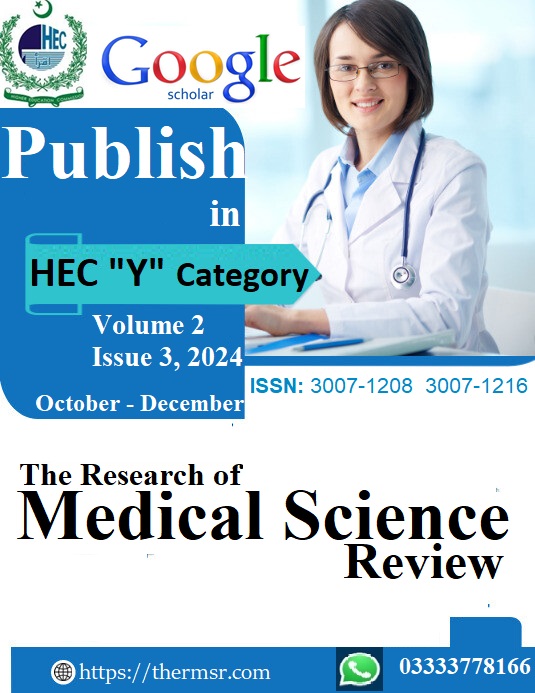PREVALENCE OF PLANTAR FASCIITIS ASSOCIATED WITH FOOTWEARAMONG HEAVY VEHICLE DRIVERS
Keywords:
Plantar fasciitis, footwear, heavy vehicle driversAbstract
Background Plantar fasciitis is a term used to describe non traumatic pain and diffuse progressively start the foot or ankle,that gradually worsen preventing progress. It is a common condition characterized by inflammation of plantar fascia, the connective tissue that runs along the bottom of the foot from the heel to the toes. These disorders may be due to overuse, biomechanical de-arrangement of the foot, nerve entrapment, inflammatory arthritis or even stress fracture. Objective The objective of this study is to find the prevalence of planter fasciitis associated with foot wear among heavy vehicle drivers. Methodology The study was conducted in various settings, including in terminals, roads, and textile industry and sugar mills. This was observational cross-sectional study whose sample size was 250. The test determination, measures incorporated the truck drivers with plantar fasciitis. The data was collected through a questionnaire and the tool was used “WINDLASS TEST”. Data was analyzed by SPSS to determine how much drivers experiences symptoms while long hour driving with open and close shoe wear. Results The study shows 25% drivers lies in 30 years of age, 50% lies in 35 years of age, 75% lies in 40 years of age. It also shows 99.2% drivers, drive in between 12-14 hours, and 0.8% drive more or less than 14 hours, 75.6% drivers wear open shoes and 24.4% wear close shoes, 2.8% drivers wear boots, 73.2% wears slippers, 18.4% wears sandals, 5.6% wears sneakers,24.4% have thick sole shoe and 75.6% have flat sole shoe, 60.4% drivers have pain due to prolonged driving and 39.6% have no pain due to prolonged driving, 57.6% drivers right foot affected, 3.6% drivers left foot is affected and 38.8% drivers no foot affected, 39.6% drivers have no pain, 38.8% have moderate pain, 18.8% have very severe pain, 1.2% have worst pain possible, 60.4% drivers windlass test positive and 39.6% have negative test. The hypothesis test shows that overall model is significant. (p>0.05).Conclusion: The prevalence based study was carried out on heavy vehicle drivers to determine the incidence of plantar fasciitis associated with footwear. Data was obtained from participants by having them inquire whether they are suffered from plantar fasciitis or not. Respondents who reported pain during long hours of driving, were analyzed through windlass test and pain scalescoring rate. For this purpose two parameters were assessed; in order to check these parameters, visual analogue scale for pain scoring, windlass test for assessment that indicates the presence and absence of plantar fasciitis.
Downloads
Downloads
Published
Issue
Section
License

This work is licensed under a Creative Commons Attribution-NonCommercial-NoDerivatives 4.0 International License.














